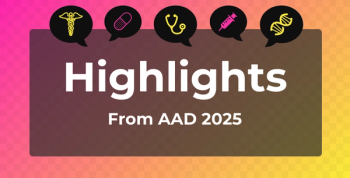Addressing the Hidden Burden of Polycythemia Vera: Andrew Kuykendall, MD

Noting the profound impact of living with a chronic condition that constantly reminds patients of their "patient" status, Andrew Kuykendall, MD, Moffitt Cancer Center, emphasizes the importance of therapies that can offer a sense of normalcy.
Captions were auto-generated.
Top-line data from the VERIFY trial (
In this interview with The American Journal of Managed Care®, Kuykendall notes the duality of living long with PV: “It’s certainly good to have a good prognosis and have an expected survival of maybe 15 to 20 years, but at the same time, I think patients don’t feel they’re normal when they have this disease.” Beyond classic symptoms like itching or night sweats, many patients endure profound fatigue and reduced capacity to engage in daily activities. These "vague, gnawing, underlying symptoms," he explains, are often hard to articulate early on but become a primary complaint over the years of living with the disease. Existing therapies have largely had a limited impact on these critical patient-centered symptoms.
The VERIFY trial, featuring rusfertide, a hepcidin mimetic peptide that acts on iron regulation, presents a novel approach. Kuykendall was particularly “intrigued to see improvements in the
Noting this profound impact of living with a chronic condition that constantly reminds patients of their "patient" status, which often ties them to frequent health care interactions. Kuykendall emphasizes the importance of therapies that can offer a sense of normalcy.
“I think anything that is able to free patients up from being tied to the health care system, to allow them to participate in activities… this is something that I think really can be something that matters to patients in their experience,” he says.
Although these VERIFY data are promising, Kuykendall stresses the need for more granular analysis, of diving in to see who benefited and what constitutes a clinically significant benefit vs a statistical one.” Future investigations should assess the durability and consistency of these symptom improvements over extended treatment periods, and whether patients who initially received placebo who switch to active treatment also experience similar relief.
Newsletter
Stay ahead of policy, cost, and value—subscribe to AJMC for expert insights at the intersection of clinical care and health economics.








































